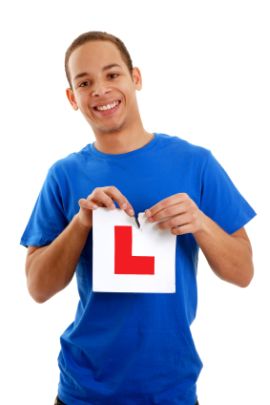Being aware of potential hazards
Having the maximum time possible to react to hazards is important and can be the difference between an awkward situation or even an accident and continuing safe driving.
This requires you not to be paranoid or nervous of every situation that occurs as a driver as it is important to drive up confidence as a road user, but rather to be vigilant and be aware of 'what if' and 'what will happen now' and so forth is important.
There are a huge range of different hazards that you might encounter, and sometimes these are not what you would expect. You may be used to people not signalling correctly at roundabouts, but what when someone actually their hazard lights flashing? Or how about when an animal suddenly enters the road in front of you. And then there are emergency vehicles to deal with - many people panic when they hear the sirens coming up behind them and in the rush to pull over they don't even look at the road around them and can either hit another vehicle, cause an accident or perhaps hit a pedestrian.
Lanes and road markings can also lead to confusion and hazards; there are hotspots where many cars seem to be in the wrong lane and therefore swerve and cut across. If you know that there is a turning ahead then be aware of cars in the outer lane cutting in front of you in order to take the turning if they are still in the wrong lane. And protected lanes can also cause problems and confusion, with taxi or bus lanes for instance on occasion being frequented by other road users too, so always be careful in any situation where there are vehicles changing lanes around you.
Related Articles...
What happens after the practical test
At the end of the test, you may have had your driving instructor in the back but taking no part in the test. If not, you can call them over before you receive the feedback and result to your...
Penalty Points
There are different offence codes for different types of offences, and penalty points come in lumps from one single point right up to eleven, depending on the type and severity of an offence that...
Tips on buying a vehicle
When it comes to buying a car, many people buy second hand in order to save the costs of a new car which of course often come at a premium having had no previous owner.
However there are risks...
What causes accidents: speed
There is a well known saying from safety campaigns which simply says that "speed kills".
Although many people think that you have to be travelling really quickly in order to make an impact...
Vulnerable road users - pedestrians
Pedestrians whether old or young are all potentially vulnerable. Any impact at all on a pedestrian is potentially fatal, and that goes for a pedestrian of any age.
Of course within the class...
What to do if you breakdown at a level crossing
Driving is potentially dangerous, but it is important not to worry about things that could happen when driving but at the same time you should know what to do in the unlikely event that something...
Road position and large vehicles
In a car there are of course blind spots, but as soon as you drive a lorry you realise how significant the blind spots are for those vehicles.
For one simple thing even with vans you can't...
Understanding illuminated signals on motorways
The location of the signs and signals that you see on motorway itself tells you some information: who it applies to.
Signs at the edge of the road will apply to all drivers, whilst those that...
Your engine temperature gauge
These days many of us get into a car without really understanding how any of it works, and even the engine and how it operates and powers the car is a mystery to many.
Well, essentially it...
What's the point of the theory test?
The official theory test is a relatively recent addition to the driving test, and has evolved and become more comprehensive over time. For many of us who ask our parents about the driving test,...
Back to home page of driving theory test questions

